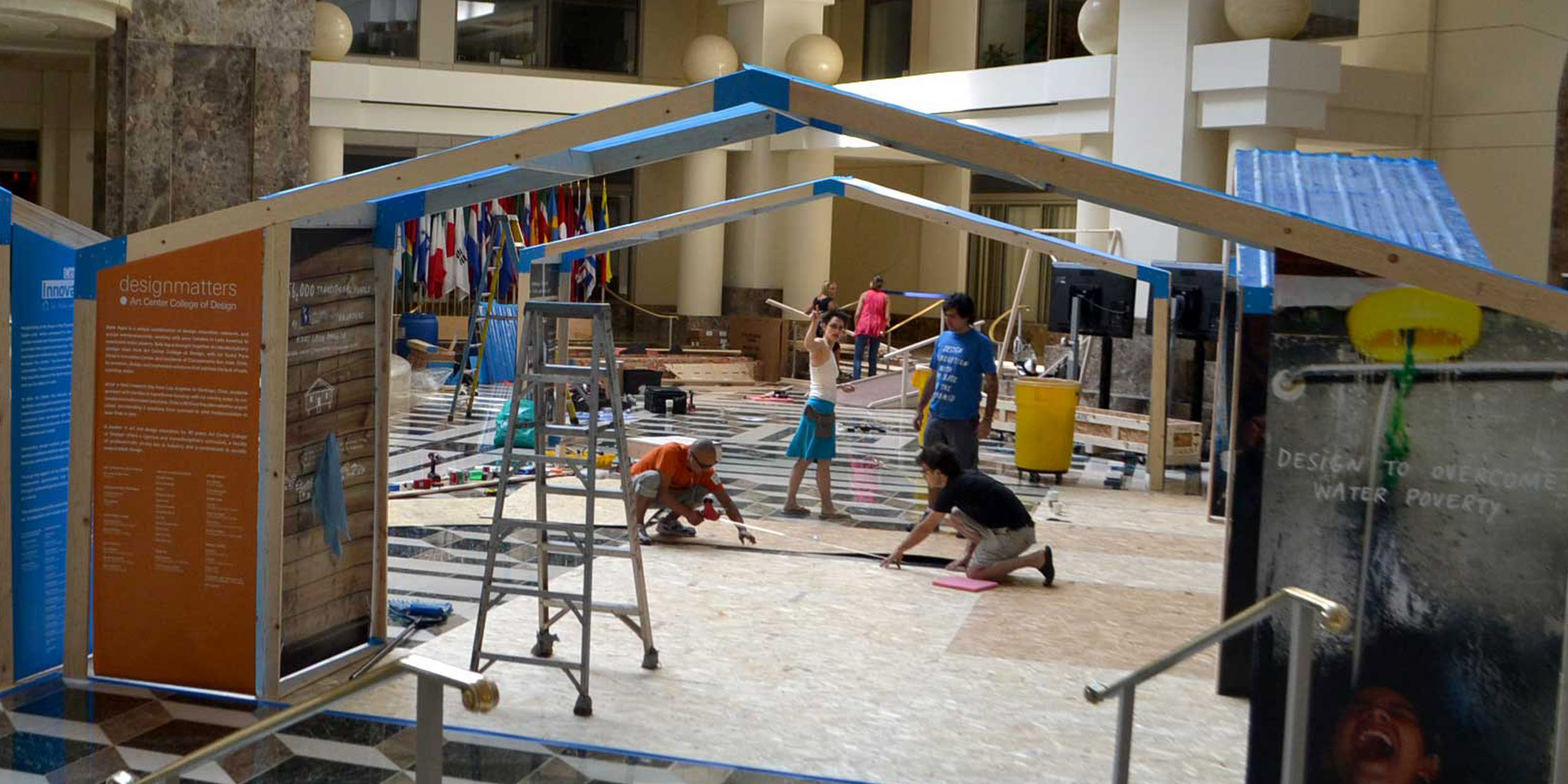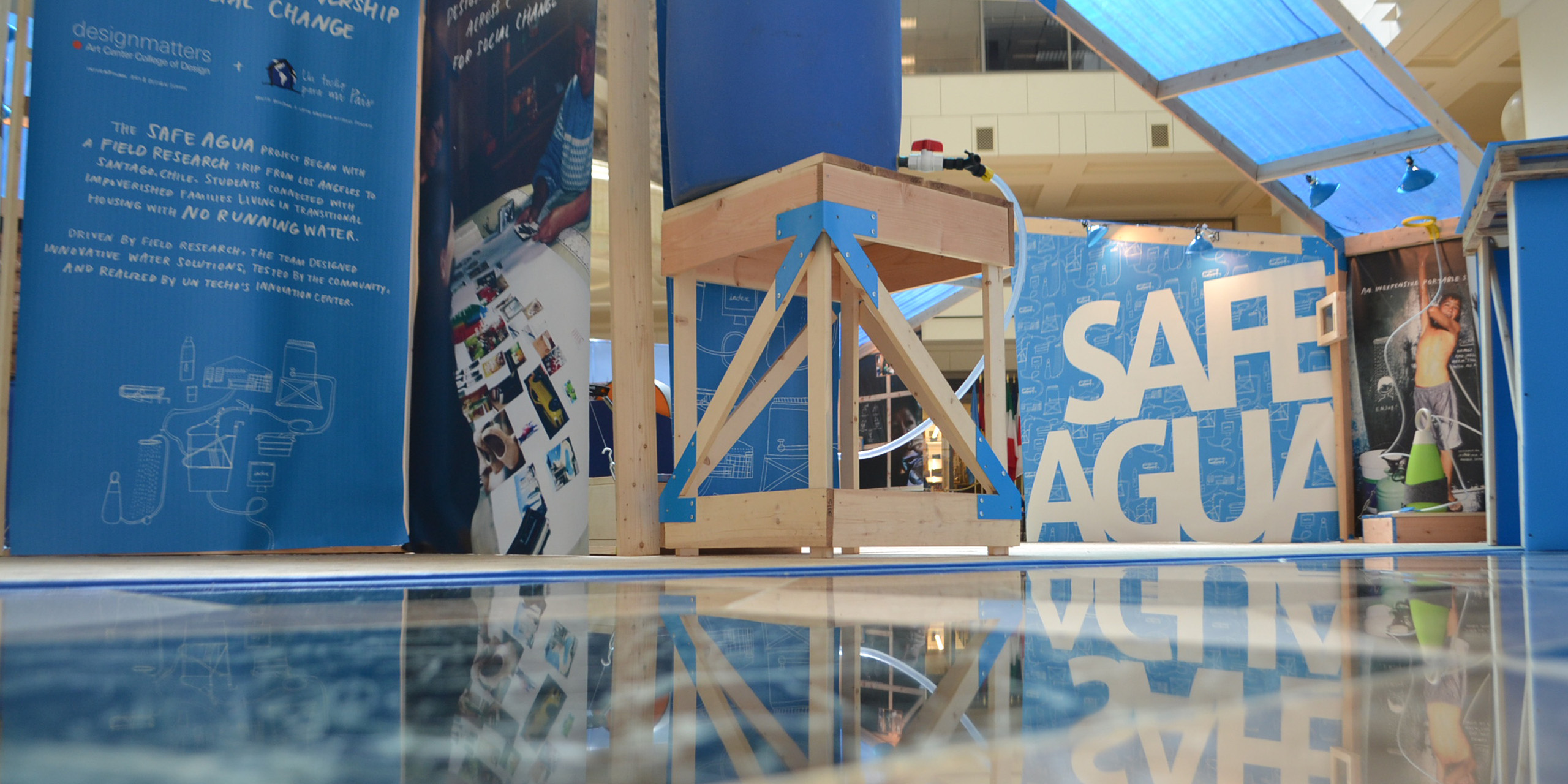Safe Agua – Exhibitions
- Social Entrepreneurship
- Sustainable Development

The Safe Agua Exhibition captures the outcomes of the social innovation collaboration for Bottom of the Pyramid Markets between the Innovation Center of Un Techo Para Mi País based in Santiago, Chile, and Designmatters. The exhibition was conceived to tour internationally as an important public educational resource to illustrate the impactful outcomes of the Safe Agua project collaboration and serve as an exemplar of the leading work of both organizations in the arena of community engagement and international development through design and innovation.
The exhibition was designed to showcase the outcomes of the project as well as a The Safe Agua documentary Film and The Harry Gota Story created for the initiative.
The exhibition’s first venue coincided with presentations of the project at the UN Pavilion during the Shanghai World Expo in fall 2010 and at the Cumulus Shanghai Conference 2010. Subsequent venues have included the Royal College of Art, London for the INCLUDE 2011 Conference , April 2011, the atrium of the Inter-American Development Bank in Washington DC, June 2011 and the Smithsonian’s Cooper-Hewitt, National Design Museum’s “Design with the Other 90%: Cities” Exhibition at the United Nations, October 15, 2011 – January 9, 2012.
“Designing with the Safe Agua Team has been the most influential project I’ve been involved with in the design field. I don’t believe there is anything more rewarding in design then using our skills and creativity to make an impact in the lives of the less fortunate.” – Ramón Coronado

About the Safe Agua Project: Design Strategy and Impact
Safe Agua provides a case study in a new and necessary approach to the critical importance of empathy-driven methodologies in design education for social impact, and documents the unfolding evolution of design and design education. Safe Agua makes a powerful case for specific, direct impacts through a human-centered, collaborative approach to problem solving.
Viewed as an example for the execution of socially driven design principles, it demonstrates the far-reaching potential for specifically tailored design research methodologies, collaborative processes, and creative solutions to achieve further relevant successes globally.
As a template for action, Safe Agua evinces the role of designers as potential change agents for people living in poverty, or otherwise suffering from seemingly intractable problems that have yet to be addressed by the power of design.
From the perspective of the students experience, Safe Agua helped students to see design in a totally different new light, supported by a context of real world challenges and demonstrated that small incremental solutions based on innovative thinking, re-purposing existing materials and maximizing resources can bring about exponential impact in society.
